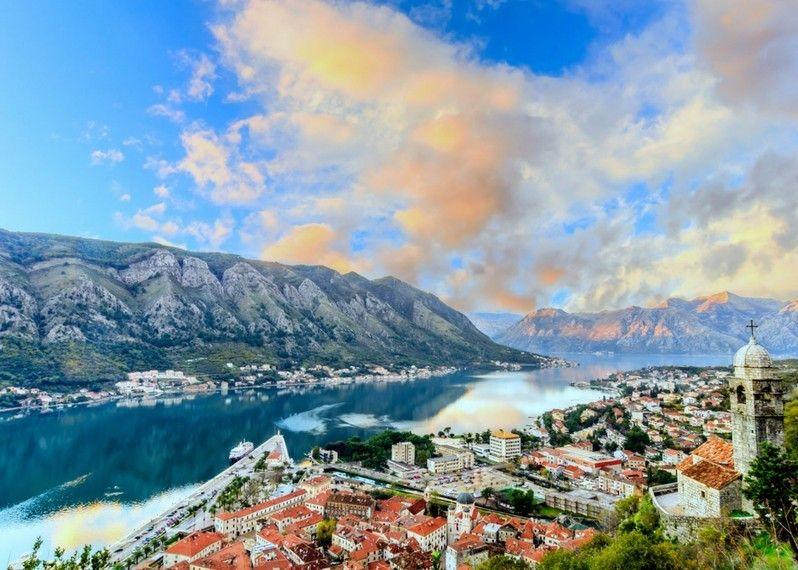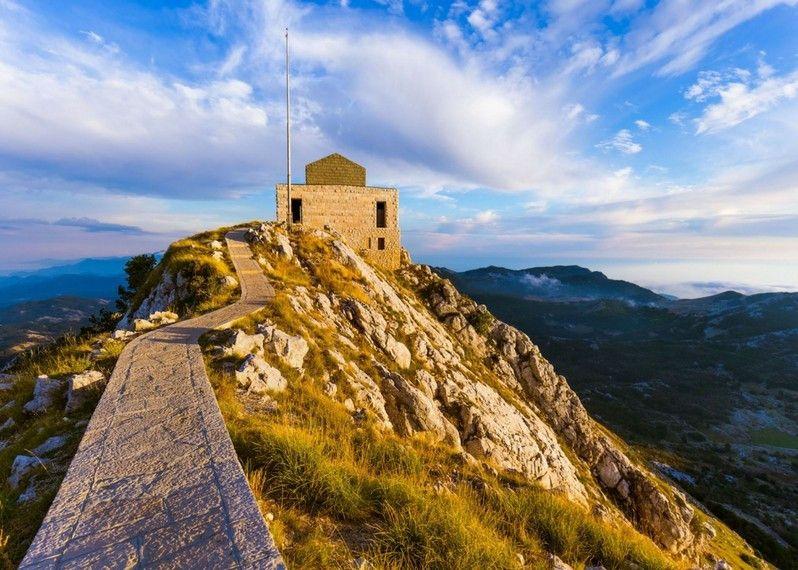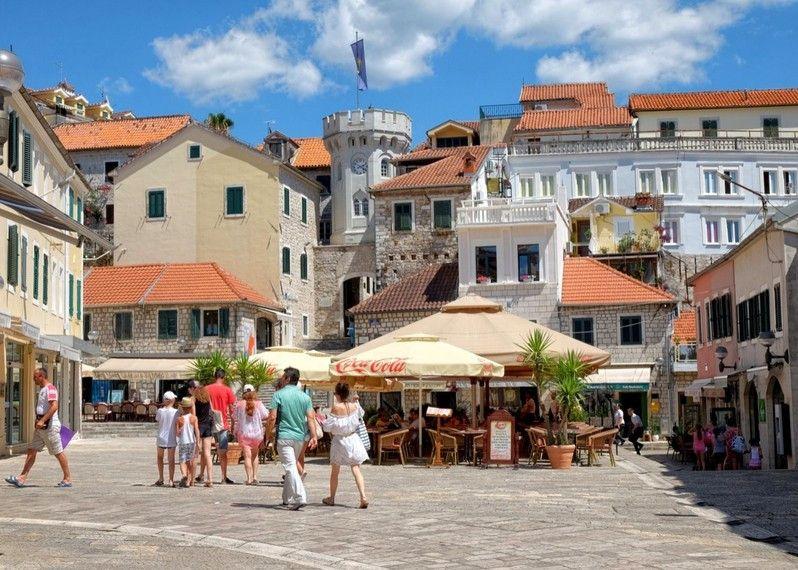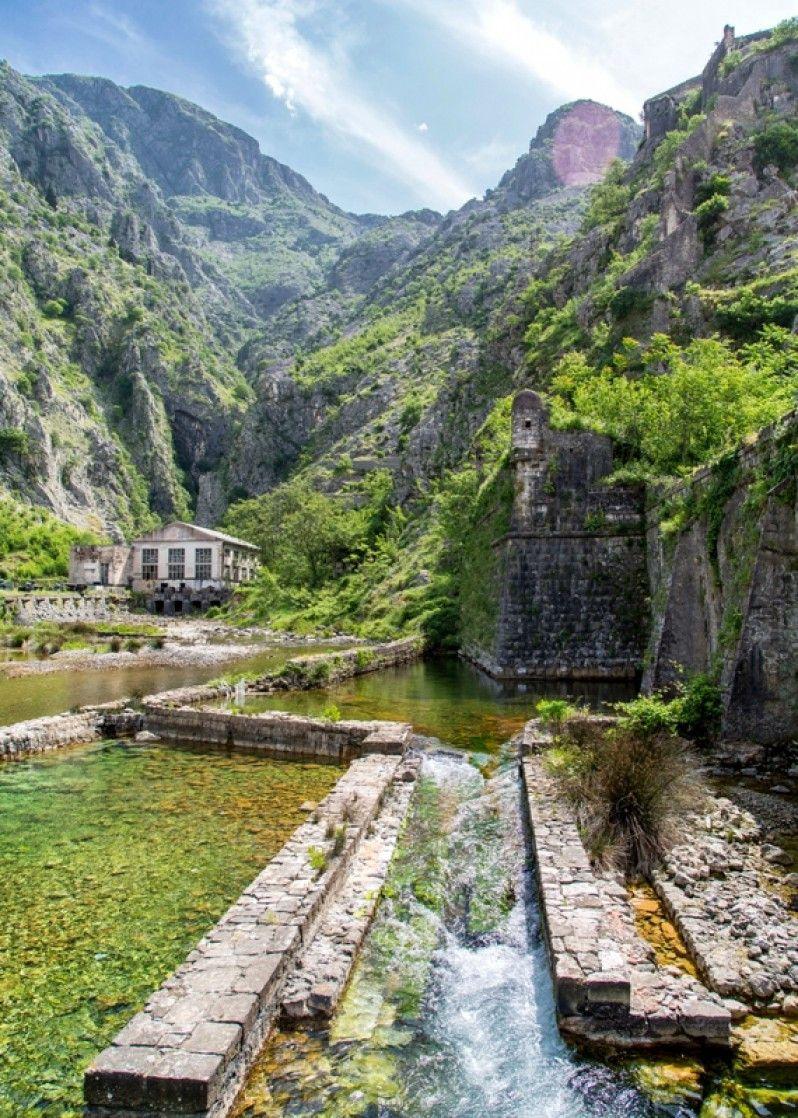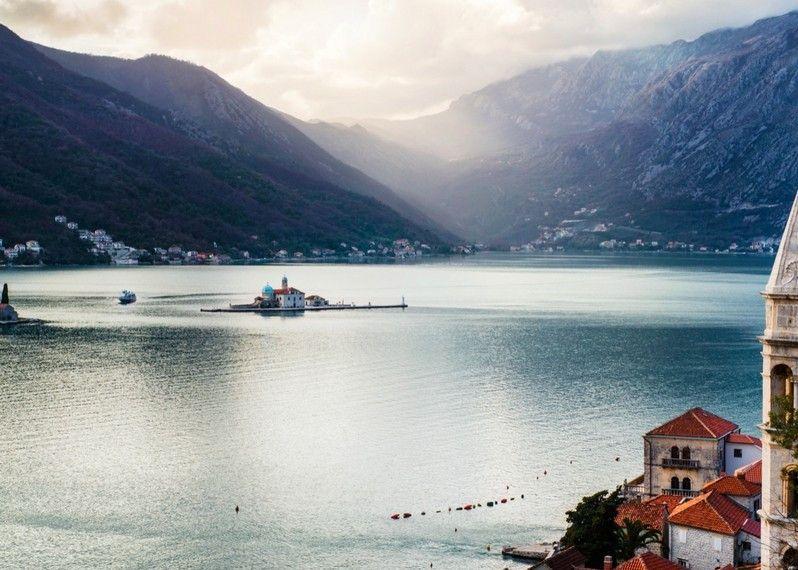Mother Nature had a bit of fun when she created the Bay of Kotor. The random succession of wild rocky outcrops plunging into azure-blue bays and coves creates an astonishing landscape that invites exploration. Easily reached but unknown to the masses who flock to Croatia's beaches, this corner of Montenegro will be a constant surprise.
The Bay of Kotor
Your heart is pounding. One step after another, your eyes fixed on the mountain, you climb - for a lifetime, it seems to you. But as you approach the fortress of Sveti Ivan, you begin to appreciate the pleasant path beneath your feet. At a certain height, the breeze, carrying aromas of pine and wild aniseed, ruffles your hair. You turn to take a look and immediately realise that the effort made was not in vain. The view is magnificent: 1200 m below you, the terracotta roofs and domes of the walled city of Kotor are reflected in the bottle-green waters of the bay, while in the distance the massive mass of wild mountains is shrouded in clouds.
Lovcen Mountains National park at sunset, Montenegro. ©Tatiana Popova/Shutterstock
Known to locals as Boka Kotorska, or just Boka (from the Italian for 'mouth'), the bay is formed by numerous inlets that open up in the limestone mass of the Dinaric Alps. The bay, which according to some is the only fjord in the Mediterranean - but geologists reject this claim - has enchanted many visitors, some of whom have immortalised it with their art, from Illyrian queens to romantic poets. Lord Byron claimed that the whole of Montenegro was rich in 'pearls of nature', and Shakespeare himself had words of praise for this 'Illyrian coast', which he never visited.
The hand of man has done nothing but enhance what Mother Nature has forged. Beautiful stone-built villages overlook the bay, and Kotor itself has entered the list of UNESCO World Heritage sites. Kotor, with its medieval walls and lively nightlife, is the main attraction for many travellers, but all corners of the bay offer reasons for interest to history, art and architecture enthusiasts and culture lovers, and endless activities to those who want to indulge in the outdoors.
Once you arrive at the fortress of Sveti Ivan, it is not unusual, still exhilarated by the effort, to feel in control of everything you embrace with your gaze and to be filled with an irrepressible urge to explore.
The centre of the historic village Herceg Novi, Montenegro. ©ollirg/Shutterstock
Exploring the surroundings
Montenegrins have a reputation among the people of the former Yugoslavia for being lazy, a stereotype that some of those involved do not reject. But given the beauty of the places, perhaps more than laziness one should speak of a predilection for a relaxed pace that allows one to fully enjoy the joys of life. Those who visit the Bay of Kotor would do well to do the same: a leisurely stroll is an inexhaustible source of pleasure.
At the western end of the bay, closest to the Croatian border, lies Herceg Novi. This old town - situated between the Fortemare bastion, on the water, and the hilltop Španjola fortress - is an attractive cluster of cobbled squares and churches connected to the beach by steep stepenište (stairways).
It is an excellent base for active travellers, who have several sports shops at their disposal. Risan, the oldest settlement in the bay, was the residence of the Illyrian Queen Teuta. This attracted the attention of the Romans who, driven by their expansionist policy, attacked the town. After conquering it, they built large palaces overlooking the sea, including Villa Urbana, dating back to the 2nd century A.D., famous for its mosaic floors: the one in the dining room depicts flowers and vines, while the one in the bedroom Hypnos, the god of sleep.
Nearby Perast, characterised by the elegance and architecture of a Venetian outpost, is a distillation of the bay's history. Its museums house vestiges of its maritime past: admire nautical charts, weapons, costumes and various objects related to life at sea. To the south, on the Luštica peninsula, the abandoned village of Gornji Stoliv stands sentinel over the water, while elsewhere you can visit remote beaches and bucolic olive groves, art galleries, churches and monasteries.
Sign up for our newsletter! For you weekly travel tips, special offers, stories from the world and 30% discount on your first order.
Channel between the mountains behind Kotor and the city walls, Montenegro. ©dbvirago/Getty Images/iStockphoto
Diversions
If you're feeling fit, follow the Kotor Stairs, an ancient carriage road that climbs from Kotor to meet the Coastal Mountain Traverse on Mount Lovćen. The name Montenegro, of Venetian origin, is said to derive from the ancient 'black forests' that once covered this very mountain. On its summit stands the Njegoš Mausoleum, the last resting place of Petar II Petrović Njegoš, the spiritual father of modern Montenegro. For the more sedentary, the route can also be tackled by car: the road, with no less than 32 hairpin bends, forces careful driving, but the views are breathtaking. Beyond Lovćen, the road continues to Cetinje, with beautiful villas and museums.
Crucial experiences
Go from island to island: take a water taxi to Perast and be taken to the small island where the Church of Our Lady of the Rocks stands, or set off from Herceg Novi and paddle a kayak to the island of Mamula.
Get lost in Kotor's maze of streets. The town is quite small, but wandering aimlessly around discovering churches, cobbled squares and cafes is great fun.
Drive around the bay from Herceg Novi to Kotor - 43 km winding along the coastal road - or cycle a shorter section between Igalo and Kamenari.
Enjoy freshly grilled squid, seasoned with garlic and olive oil, at Konoba Feral near the waterfront in Herceg Novi.
Related articles
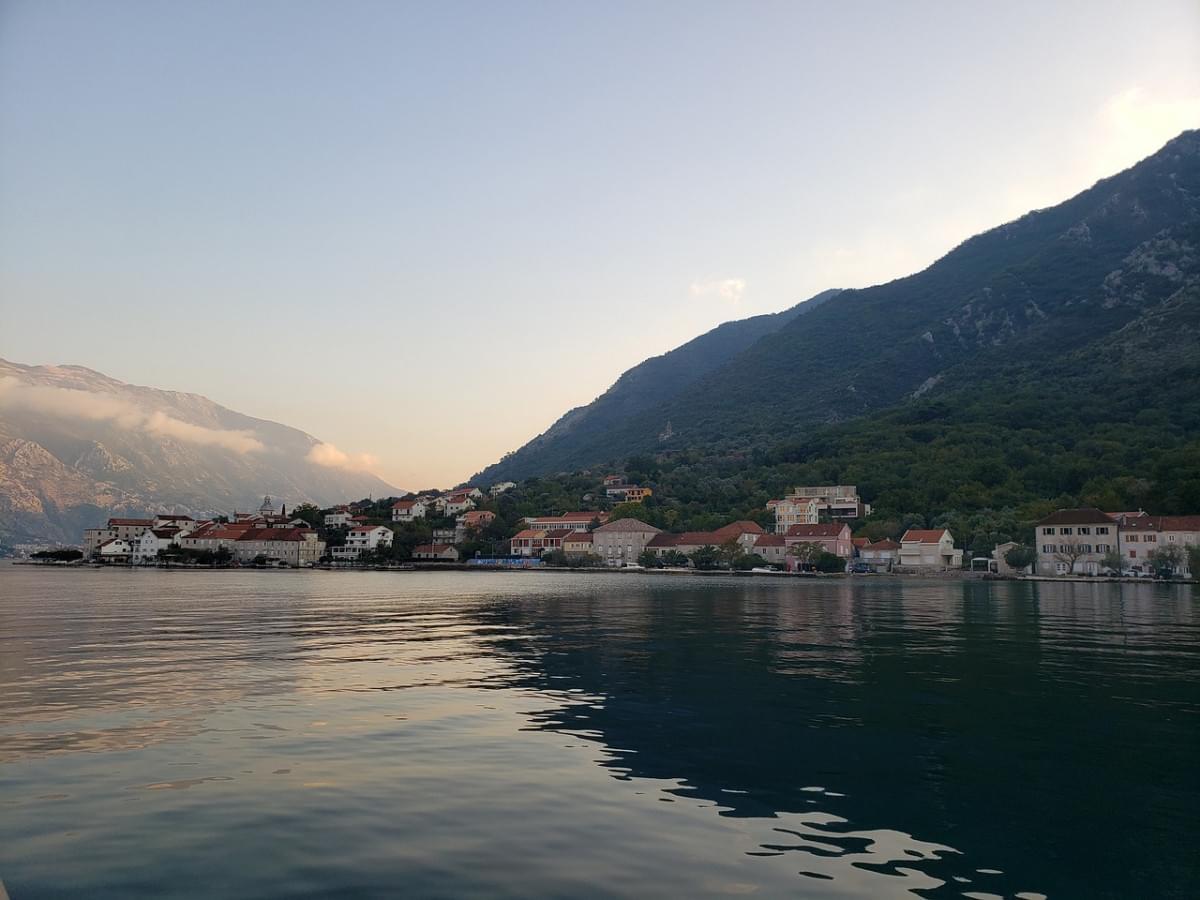
Kotor, Montenegro: what to see, where to eat and what to do in the evening
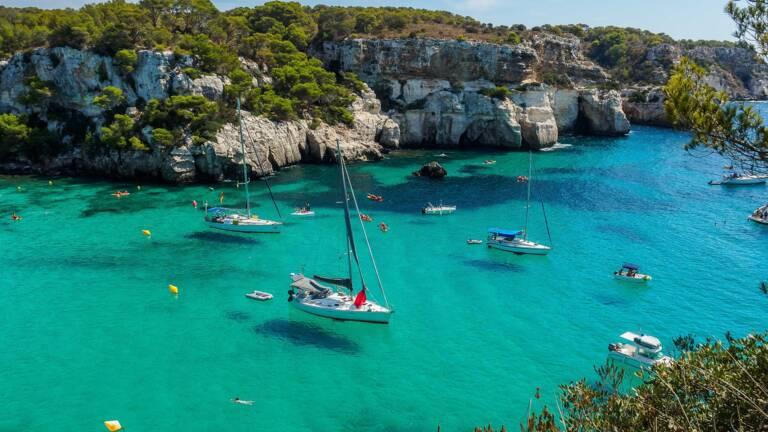
What are the most beautiful places in Montenegro?
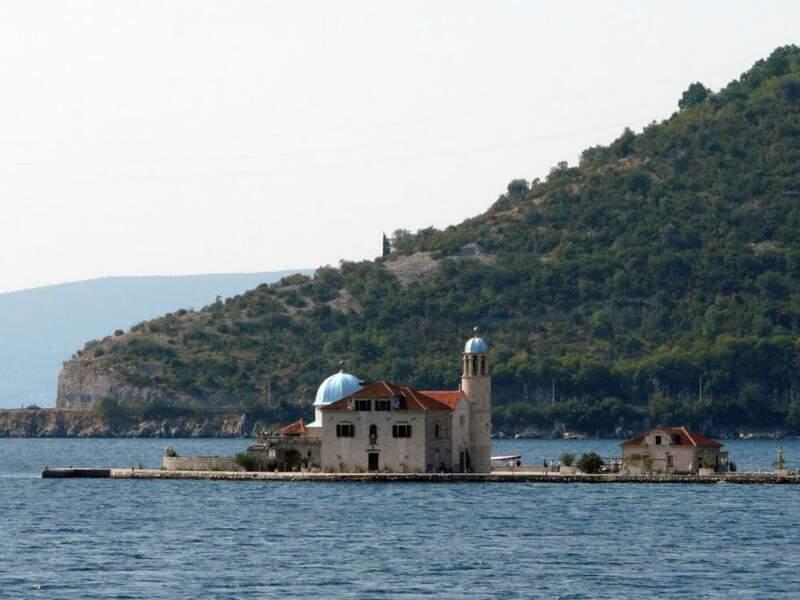
Discovering the Bay of Kotor, Montenegro
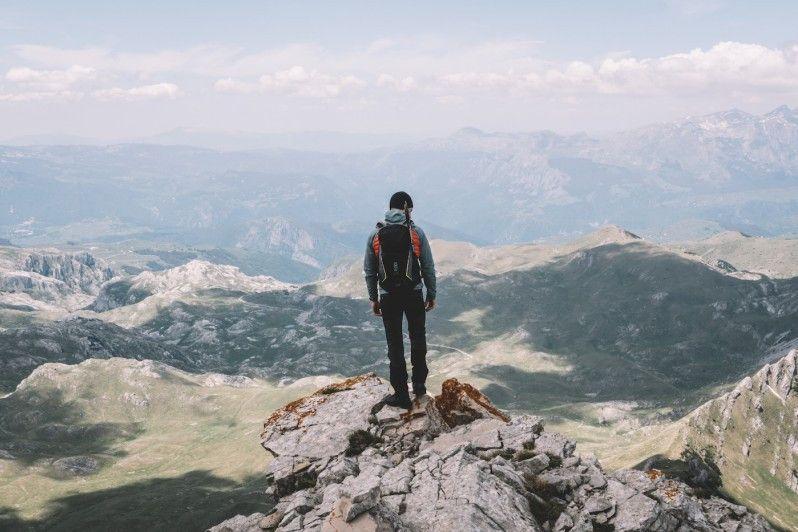
Montenegro less beaten
Best time to visit Montenegro 2024 - Weather & 34 things to do
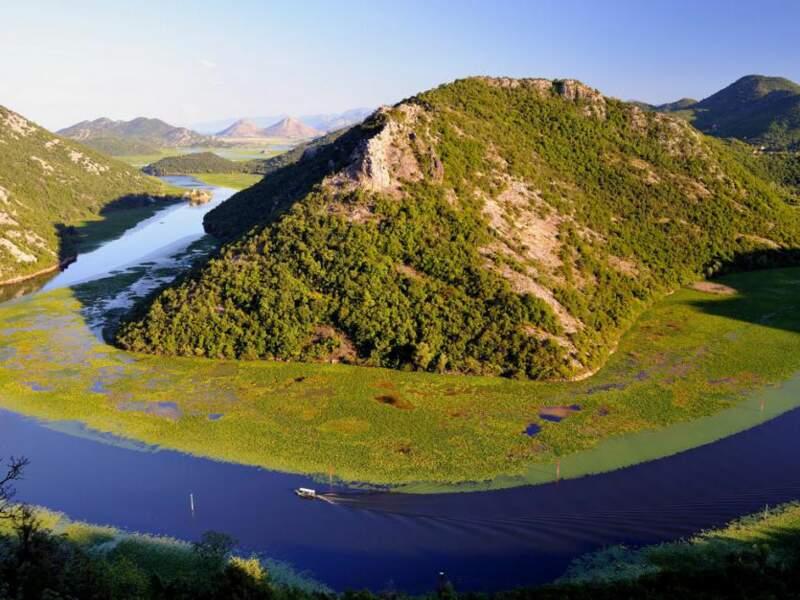
Stroll in Montenegro, on the shores of Lake Skadar
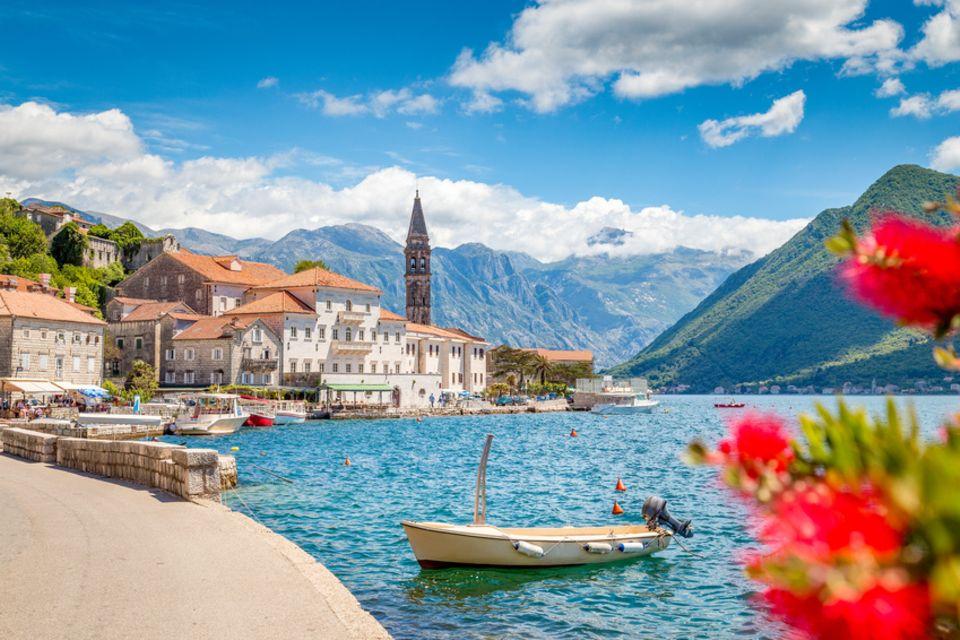
Montenegro - A country between waves and clouds
